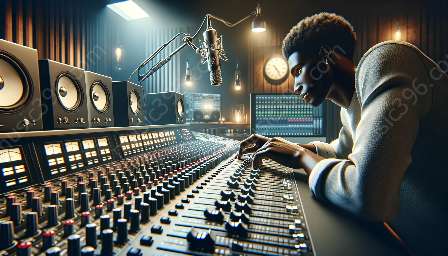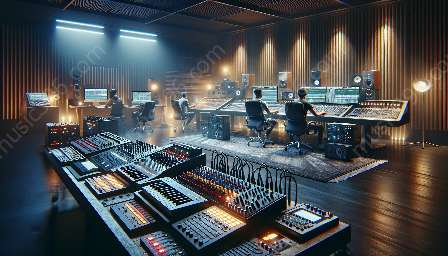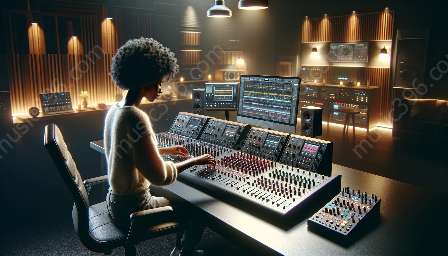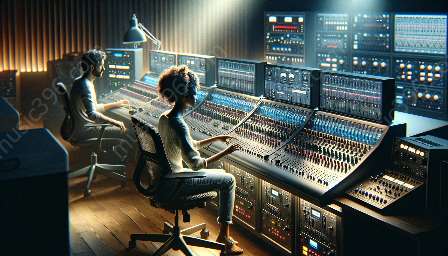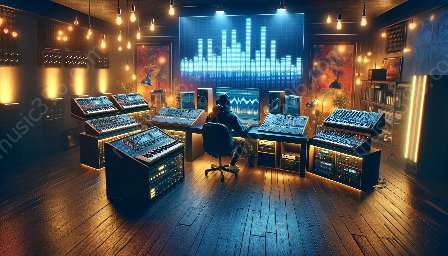Music education and training have undergone significant changes with the integration of virtual instruments, which have revolutionized the accessibility and effectiveness of learning music. In this comprehensive guide, we will delve into the role of virtual instruments in music education, their impact on accessibility, and their relationship with music technology.
The Evolution of Music Education
Historically, music education and training have been confined to traditional methods, such as learning to play physical instruments, attending in-person lessons, and relying on physical music sheets. While these methods have their merits, they often pose challenges in terms of accessibility, cost, and adaptability to individual learning styles.
Introduction of Virtual Instruments
With the advancement of music technology, virtual instruments have emerged as a transformative force in the world of music education. Virtual instruments, also known as software instruments or plugins, replicate the sounds of traditional instruments through digital interfaces. These instruments can be accessed and played on computers, tablets, or smartphones, eliminating the need for physical instruments and providing a cost-effective alternative for learners.
Enhanced Accessibility
One of the key contributions of virtual instruments to music education is their enhancement of accessibility. Students and enthusiasts from diverse backgrounds and geographical locations can easily access virtual instruments through online platforms, music production software, and educational websites. This accessibility transcends physical barriers and enables individuals to explore and learn music at their own pace and convenience.
Interactive Learning Experience
Virtual instruments offer an interactive learning experience that engages users through intuitive interfaces, customizable settings, and real-time feedback. Learners can experiment with different instrument sounds, practice various musical styles, and receive instant evaluations of their performance. This interactivity fosters a dynamic and immersive learning environment, making music education more engaging and enjoyable.
Integration with Music Technology
The synergy between virtual instruments and music technology has significantly enriched music education and training. Music production software, digital audio workstations (DAWs), and virtual instrument libraries have become essential tools for music educators and students. The integration of virtual instruments with sophisticated technology has expanded the creative possibilities in music composition, arrangement, and production, empowering learners to explore diverse musical genres and techniques.
Empowering Music Educators
Virtual instruments not only benefit learners but also empower music educators and instructors. Teachers can utilize virtual instruments to demonstrate musical concepts, create interactive learning materials, and facilitate collaborative music-making projects. Moreover, virtual instruments offer educators the flexibility to introduce students to a wide array of instruments and musical styles, thereby broadening their horizons and nurturing a deeper appreciation for music.
Customized Learning Tools
Advancements in music technology have led to the development of specialized virtual instruments and music education software that cater to individualized learning needs. Adaptive learning systems, virtual music theory tutors, and instrument-specific tutorials enable learners to receive personalized guidance and support, adapting to their skill levels and learning preferences. These customized learning tools contribute to a more inclusive and supportive learning environment for music enthusiasts of all levels.
Global Collaboration and Communities
The accessibility of virtual instruments and music technology has facilitated global collaboration and the formation of online music communities. Through digital platforms and virtual classrooms, individuals across the world can connect, share musical projects, and participate in collaborative performances. This interconnectedness transcends geographical boundaries, promoting cultural exchange, diversity, and the collective celebration of music.
Adapting to Changing Realities
In the face of evolving societal norms, virtual instruments have adapted to changing realities by providing alternative avenues for music education. In times of remote learning, virtual instruments have become indispensable tools for sustaining music education continuity, enabling learners to engage in music lessons, ensemble rehearsals, and virtual performances from the comfort of their homes.
Conclusion
Virtual instruments have undeniably revolutionized the accessibility of music education and training, reshaping the landscape of music learning through their inclusive, interactive, and technologically advanced attributes. As music technology continues to advance, the integration of virtual instruments is poised to further democratize music education, nurturing a new generation of musicians and fostering a global community united by the love of music.

